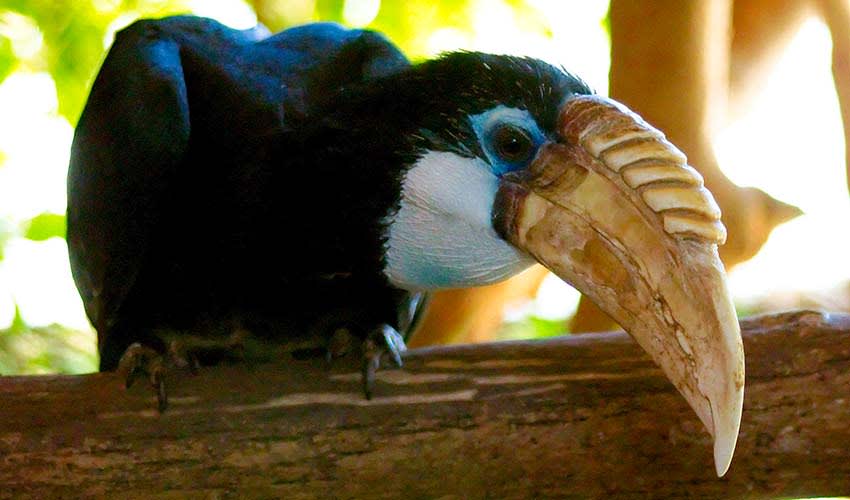Rhyticeros – Hornbills
Their casques aren't just there for show – they help make their calls super loud, it's like they're singing with a built-in megaphone
These birds are distinguished by their impressive size, vivid plumage, and, most notably, their large, often ornately patterned bills topped with prominent casques. The casques, while indeed a striking visual characteristic, are not solely for display. They serve multiple purposes, including amplifying the birds’ calls, which resonate through the forests, potentially aiding in thermoregulation, and as a sign of fitness to potential mates.
The calls of Rhyticeros hornbills are not just any avian vocalization; they are complex and can vary widely among species. These calls serve as a means of communication over long distances in the dense forests where these birds live, facilitating everything from mate attraction to territorial disputes.
As frugivores, Rhyticeros hornbills have a diet that largely consists of fruit. They have a special place in the ecosystem, acting as seed dispersers. When they consume fruits, they transport the seeds over great distances, excreting them in various locations, thus playing an essential role in maintaining the health and spread of their forest habitats. Their role in seed dispersal is so significant that many tropical plants have evolved fruits that specifically cater to hornbills, ensuring that their seeds will be spread effectively.
In addition to fruit, Rhyticeros hornbills also include a variety of animals in their diet, such as insects and small vertebrates. This predatory behavior further cements their role as keystone species in their habitats, influencing several trophic levels within the ecosystem.
The breeding habits of Rhyticeros hornbills are unique and fascinating. They utilize a nesting strategy where the female is sealed in a tree cavity, leaving just enough space for the male to pass food to her and the offspring. This behavior ensures the protection of the female and the young from predators and is a testament to the birds’ complex social behaviors and the high level of parental investment characteristic of the genus.
Species in this genus
Wreathed hornbill
Their beaks are tools for everything from cracking open fruits to catching insects mid-air – talk about multitasking!
Blyth’s hornbill
Though their casque looks tough, it is hollow and functions more like an amplifier, helping project their calls



